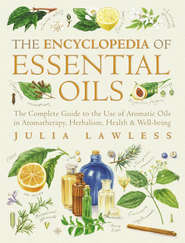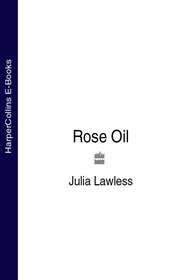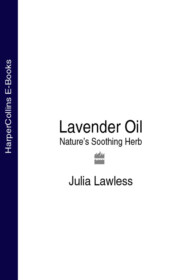По всем вопросам обращайтесь на: info@litportal.ru
(©) 2003-2024.
✖
Aloe Vera: Natural wonder cure
Настройки чтения
Размер шрифта
Высота строк
Поля
There are about 350 varieties of Aloe in the Aloaceae family. In South Africa alone, 132 species were recorded in 1955! They range from miniature aloes like Aloe aristata and Aloe brevifolia to small aloes such as Aloe striata, which is one of the prettiest of the species. Its leaves are pale green edged with light coral red and sometimes flushed with pink. The flowers are orange or pinky-red and roughly resemble a mass of coral. The flowers of different aloes vary in colour from cream or orange to scarlet, rose flame or spectacular autumn tints.
Among the large aloes are Aloe arborescens and Aloe ferox, both used for healing purposes. In the 19th century, James Backhouse, in A Narrative of a Visit to Mauritius and South Africa, refers to Aloe arborescens as a Tree-Aloe, otherwise known as ‘Kokerboom’ in the Afrikaans language. ‘Kokerboom’ means Quiver Tree, as it was used by the Bushmen to make quivers from its branches. Members of the Aloaceae family known for their medicinal properties include:
Aloe arborescens, which is used in Japan and has been cultivated mainly in Russia and the Far East. It has long slender blue-green leaves with toothed edges, and cream stripes. It produces numerous spikes of red flowers in late winter and spring, and grows to a height of 1.8 m (6 ft) high.
Aloe ferox or Aloe ferox ‘Miller’ has a red or reddish pink flower and has been identified as being the same plant as Aloe african ‘Miller’. Its flowers are described as orange-scarlet according to the Royal Horticultural Society. This Aloe originated in South Africa and is also referred to as the Cape Aloe. This only adds to the confusion, as in southern Africa Aloe barbadensis ‘Miller’ is known as the Cape Aloe. Nor is Aloe african ‘Miller’ the same plant as Aloe africana. Aloe africana has a yellow flower. It is not the same species and is not officially recognized as being a medicinal source.
Aloe perryi ‘Baker’ is otherwise known as the Socotrine or Curaçaon Aloe, after the islands of Socotra and Curaçao where it is found. Other names include Zanzibar Aloes, Uganda Aloes, Natal Aloes and Musambra Aloes. The flowers of Aloe perryi ‘Baker’ are bright red with a greenish tip.
Aloe saponaria, found all over South Africa, Swaziland and Zimbabwe, is one of the spotted Aloes, with dull white oblong spots on its leaves. The flowers are orangey-yellow in colour.
Aloe vera (L.) Burm.f is the correct name for Aloe vera, which was formerly known as Aloe barbadensis ‘Miller’. According to Dr Tom Reynolds of Kew Gardens, ‘Burman had priority over Miller’s later use of the name A. barbadensis, but perhaps only be a period of 10 days … the correct name is thus Aloe vera (L.) Burm.f.’
It is considered very effective in healing and is characterized by its very sticky mucilage.
The origins of Aloe vera is not clearly known. Some writers claim it comes from southern Africa, others from northern Africa. One of the most authoritative botanical sources, Mr Nigel Hepper, retired senior botanist at Kew Gardens, has suggested that it may come from the Yemen. This has not been proven, but the Aloe vera plant has been found in the Yemen in remote places where it was clearly not transplanted from another region. It has also been found in Tenerife in mountainous areas. In the light of early Egyptian and Mesopotamian records, it most likely comes from either the Yemen or North Africa.
Aloe vera is a clump-forming, perennial succulent with basal rosettes of tapering, thick leaves, mottled green, later turning grey-green. It is a cactus-like plant with distinctive spiky leaves whose flower stems carry bell-shaped yellow flowers in summer. From the centre of the dark green leaves of the Aloe vera plant, the flower stems, which are leafless, can reach 1.5 m (3 ft) in length and have attractive tubular-shaped bells.
The Aloe vera plant is characterized by its long tapering sharp leaves with ribbed thorny ridges along the spine. The fleshy leaves grow in a spiral shape to form a rosette pattern. This rosette pattern is a distinctive feature of Aloe vera. The soft fleshy leaves of the Aloe vera exude a watery gel or juice when cut, and contain the plant’s two main medicinal products:
1 the sap from the rind, known as the exudate
2 the gel/juice, used extensively in healing.
The leaves themselves can also be dried and made into powder (for use in beauty products). All medical aloes, however, produce a typical bitter yellowish or reddish sap which is their common characteristic.
All Aloes are part of a larger genus called Xeroids, which implies an ability to ‘shut down’ the pores (or ‘stomata’, tiny openings in the epidermis of the leaf) to ensure that water is retained within the plant. In this way they can survive long periods without water. This same ability to close the stomata in the leaf also apparently facilitates the almost miraculous closing of any wound or damage to the outer skin of the plant. The power to heal itself so rapidly and re-grow in another direction doubtless pointed the way to its use as a wound treatment.
The Aloe vera plant takes about four years to mature, by which time the gel in the outer leaves is at its most potent. When fully grown the individual leaves can reach a height of 60 to 90 cm (2 to 3 ft) and each leaf can weigh approximately 1.5 to 2 kg (3 to 4 lb). Each plant usually has 12 to 16 leaves. As a perennial, Aloe vera lives for about 12 years. When the outer leaves are harvested, up to three times a year, the plant is able to close itself down against water loss. Within a few seconds of being cut, the plant films over the wound and a protective coating forms which stops loss of sap. The outer leaves are always harvested first, allowing the inner leaves time to develop their ripeness and potency.
Although Aloe is ideally suited to growing in hot, arid climates, it can be grown in glasshouses or indoors in Europe. As it is frost-sensitive it should always be kept in warm conditions, requiring a minimum temperature of 7–10°C (45–50°F). However, although frost can kill them, the plants seldom die simply from exposure to cold unless they are very young. Tree Aloes and shrubs with a spread over 30 cm (1 ft) prefer full sun; most smaller species require partial shade. The plant also requires very well-drained soil. Ideally, in warmer climates it likes sun for at least two hours a day, porous or sandy soil and exposure to the wind. The wind actually conditions and strengthens the thick meaty leaves.
The Aloe is easily propagated since at the base of the plant, suckers or ‘pups’ grow which can be separated to make new cuttings. Apart from their requirement for warmth, an Aloe vera plant is very easy to maintain as a house plant or conservatory specimen. Watering should be infrequent and less so during winter months. Like orchids, Aloes can be killed by too much care and water!
Myth, Legend and Folklore (#ulink_67d0e11d-8aed-55e6-a72d-74a5ad0752fa)
ALOE VERA
Aloe vera has been in use for over 5,000 years. Throughout the ages it has maintained its reputation as being a seemingly magical plant, able to cure all or almost all ailments. As such, it is natural that it has given birth to a plethora of legendary tales, some which have their root in fact while others belong to the realm of myth.
The Early Egyptians, Hebrews and Greeks
Known as the ‘Plant of Immortality’ by the early Egyptians, there are tales that Aloe was used in the embalming process and also in the burial rites of the Pharaohs. In addition, the beauty of Nefertiti and Cleopatra was attributed to the use of Aloe. Cleopatra apparently owed her extraordinary good looks to bathing in a mixture of Aloe gel and goat’s milk. Aloe, finely powdered, was also said to have been used to make her eyes bright in the same way we use eyebright nowadays. The Pharaohs believed that the plant had magic powers and assigned it a royal status within their household.
As for its uses in embalming, it might well be that Aloe is being confused with aloeswood, Lignum (or Lignin) Aloes, from the East African Aloes tree (Aquilaria agallocha). The oil from Lignum aloes was used by the Hebrews to perfume their beds, anoint their bodies and cover the smell of decaying flesh during the burial ceremony. The same myth persists in Biblical references which claim that Aloe was used in the embalming of Christ:
And there came also, Nicodemus, which at the first came Jesus by night, and brought a mixture of myrrh and aloes, about a hundred pounds weight … Then they took the body of Jesus and wound it in linen cloth with the spices, as the manner of the Jews is to bury. [John 19:39–40]
One of the earliest and most popular surviving legends is that Alexander the Great, after his conquest of Persia in 333 BC, was persuaded by his tutor Aristotle to conquer the island of Socotra in order to obtain Aloe plants. Socotra lies off the east coast of Africa between Aden and Somalia. It is said that Alexander drove the inhabitants off the island and used the plant in his military campaigns, as a healing balm for his soldiers’ wounds. This Aloe was known as Aloe succotrina, which is one of the earliest classifications of Aloe vera. Reputedly there were five Aloe vera plantations on Socotra, which apparently traded with China, India, Tibet and Malaysia. It is questionable indeed whether Alexander actually engaged in such a conquest, as records suggest that this island lies 1,500 miles south of Alexander’s known conquests.
Eastern Cultures
Claims that Aloe vera was taken into Tibet from Socotra also appear to be unsubstantiated in Tibetan medicine. Popular references denote Aloe as ‘jelly leeks’ in Tibet. The only reference to ‘jelly leeks’ being used in areas close to Tibet is in 1943 by Colonel M Thomas Tchou of Tzechow, which lies in Western China at the foothills of the Himalayas. In 1901 he used Aloe gel on a burnt hand, as recommended by his aunt. His sores healed. Some 38 years later Tchou met a Dr Cole in Cleveland, Ohio, who advised him to use Aloe vera to treat ulceration caused by radiation. Immediately Tchou then recognized that it was the same plant his aunt had given him so many years before in China.
While Aloe vera was used in India and China, it is possible that what was referred to in Tibet was aloeswood, which is used for the making of incense or medicine. In Ayurvedic medicine, aloeswood (Aquilaria agallocha) is known in Hindi as Agar and in Sanskrit as Agaru; Tibetan medicine employs Agar as a treatment for hyper-activity and to induce restful sleep. Chronicler Ain-i-Abari reported during the reign of the Moghul Emperor Akbar (about 1595) that ‘Aloeswood is often used in compound perfumes. When eaten, it is exhilarating. It is generally employed in incense. The better qualities, powdered, are used for rubbing into the skin and clothes.’
Agar forms the Indian word for incense – agarbati, or ‘lighted aloeswood’. In Ayurvedic medicine the powdered wood of the Aloe tree is used as a skin tonic and as a gentle antiseptic for ear and eye infections, as well as for open wounds. These medical uses could easily provide an explanation for the confusion with Aloe vera.
Aphrodisiac qualities are also attributed to Aloe in the classical Indian guide to sexuality, the Kama Sutra. In China too, Aloe vera has been traditionally mixed with liquorice to be drunk as a tonic. These cultures believed that Aloe vera possessed magical properties conducive to good health, happiness, sexual prowess and long life. Like the Chinese who drank Aloe vera to enhance their sexual prowess, the Roman Emperor Tiberius purportedly drank Aloe vera juice to increase his potency! Thousands of miles away, the native American Navajos also extolled its energizing sexual qualities, as did members of certain South American tribes. Although it is easy to exaggerate these claims, contemporary studies in sexuality have shown that there is a close link between levels of virility and nutrition. Since Aloe vera is extremely rich in nutrients, this is not such an unlikely or unfounded use for the plant. Furthermore, the Russians have been using Aloe successfully to treat male impotence (see First Aid (#litres_trial_promo) section).
The New World
In the popular imagination, Christopher Columbus has also been traditionally linked with Aloe vera. Perhaps the best known of all these ‘legends’ is that Columbus carried Aloe vera plants on his first voyage to the New World. This was because he wanted to use it as a treatment for sunburns, cuts, wounds and other accidents liable to occur on board ship. Although Aloes are mentioned twice in his logs of 1492, there is some doubt as to what plant Columbus was referring. In fact it is more likely he was carrying the Agave plant, which has also been used for healing purposes and which is easily mistaken for Aloe vera by the uninitiated. At that period Aloe vera was not known to exist in Northern America except in Florida, Texas and California. There are, however, other records which suggest that Columbus documented the presence of Aloe in Cuba and other Caribbean islands.
Ponce de Leon, the 15th-century Spanish explorer, went to America in search of ‘the fountain of youth’. The native Seminole people of Florida showed him Aloe and its many uses, including its benefits as a digestive aid, hair-restorer and life-giving tonic. According to the native Americans, the elixir of long life resided in a pool in the middle of a cluster of Aloe vera leaves!
An Aloe by Any Other Name…
Aloe is known throughout many cultures by different poetic names, many of which reflect its legendary association with immortality. The origin of the word is generally traced to the Arabic word ‘alloeh’ which means ‘bitter and shiny substance’. There are other possible sources, but this seems to be the most plausible. As the ancients used either the sap or the ground leaf, in both instances the result is a shiny and bitter substance. In Hebrew it is referred to as ‘halal’ (or ‘allal – bitter) which means ‘shiny bitter substance’, as does the Syrian name for it, ‘alwai’. In ancient Hebrew it was called ‘ahaloth’.
The ancient Chinese considered the plant to have major therapeutic qualities and called it the ‘Harmonic Remedy’. In 9th-century China, the leaves were said to look like the ‘tail of a giant crab’. Chinese Materia Medica refer to Aloe vera either as Aloe chinensis or Aloe vulgaris. Knowledge of the plant seemed to be predominantly in the province of Canton, as it entered China through the trading port of Canton. It was ‘much used in the worm-fever and convulsions of children’ and for skin infections, mixed with liquorice.
The Chinese referred to the plant as having come from Persia, Java and Sumatra. In 1985, in a contemporary Chinese herbal, Him-che Yeung refers to Aloe vera as having anti-cancer properties, anti-fungal and anti-parasitic properties as well as it being a purgative and wound healer.
In Ayurvedic medicine Aloe vera is known as ‘Ghrita-Kumari’: ‘Kumari’ means a young girl, virgin or a maiden, and Aloe was so-called because it brings about the renewal of female energy and imparts the energy of youth. In Ayurvedic medicine, the gel is used as one of the most important tonics for the female reproductive system, the liver and for regulating fire. The gel can be used for premenstrual tension, regulating menstrual flow, menopause and for women who have had hysterectomies. In Ayurveda, it is considered good for all three ‘humours’ or ‘constitutional types’: Vata (characterized by nervousness and sensitivity), Pitta (fiery), and Kapha (steady, regular, prone to sluggishness).
The Arabs called it the ‘Desert Lily’. The Knights Templar, who drank a heady mixture of palm wine, aloe pulp and hemp, called it the ‘Elixir of Jerusalem’, attributing their longevity and health to it.
In Japan Aloe vera is popularly called ‘No Need of a Doctor’; in Java it is known as ‘Crocodile’s Tongue’, and in Malaysia as ‘Mother-in-law’s tongue’ – no doubt referring to its bitter taste and the pointed sharp leaves! Infinitely more poetic is ‘The Wand of Heaven’ as it was known in Egypt. Elsewhere it has been called ‘Heaven’s blessing plant’, the ‘Mystical plant’ or ‘Miracle plant’, the ‘Magic medicine plant’ and the ‘Flow of Life’. It is more accurately known as the ‘Burn plant’ in current terminology or the ‘First Aid plant’, ‘Wound-healing plant’ and ‘Man’s natural medicine chest’. In contemporary America it is known as ‘the Silent Healer’.
Like the Egyptians, the native Seminole people of Florida, and native Mexicans, call Aloe vera the ‘Plant of Immortality’. The Russians echo the ancient Egyptians’ praise of Aloe vera by calling it the ‘Elixir of Longevity’. So revered and beloved has this plant been throughout different cultures and periods in our history that the list of names goes on and on, all praising Aloe vera’s qualities in a practical or poetic fashion.
The Elixir of Longevity
The claim to Aloe being an aid to longevity was borne out by an extraordinary Frenchman in the last century, a philosopher and a practitioner of medicine, a man administering to the poor in the belief that medicines should not be prohibitive, nor health the privilege of the rich:
During the 20 years that I have been treating my patients with Aloe, I have found that there are many diseases described by the doctors of antiquity which disappear rapidly when I administer Aloe in the form of granules or powder. Therefore, the good results which I have always obtained allow me to quote the adage of Roger Bacon: ‘Do you wish to live as long as Noah? Then take some pills of Aloah!’
François Vincent Raspail (1794–1878)
In a more profound sense, Aloe vera’s symbolic association with long life and immortality, its association with embalming and the transition between one life and the next, may lie in the renewing nature of the plant itself. J Norris in the Garden Journal (New York Botanical Garden, 1973) wrote:
If a plant is able to heal its own wounds, to survive without nourishment, even seemingly to return from the dead, might not its power somehow be applicable to man’s own maladies?
Traditional Uses (#ulink_40d81785-e960-5040-bc8b-a56d06a9adb2)
ALOE VERA











